
Thank you to the all the entrants and congratulations to the 2024 winning teams!
NIBIB-sponsored prizes
"We congratulate all the participants and their mentors on the impressive engineering designs and their passion for addressing compelling healthcare problems. DEBUT demonstrates the power of interdisciplinary teams coming together to deliver solutions to benefit patients.”
— Bruce Tromberg, Ph.D., NIBIB Director
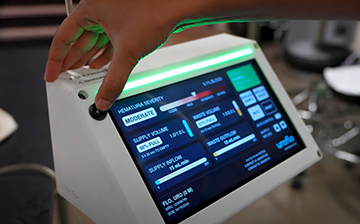
NIBIB “Steven H. Krosnick” First Prize ($20,000): UroFlo: An automated and intuitive UTI and blood clot prevention device, Rice University, Houston
Anushka Agrawal, Sahana Prasanna, Robert Heeter, Archit Chabbi, Kevin Li, Richard Chan
UroFlo is an adaptive, automated, intuitive continuous bladder irrigation system to improve post-operative assessment of hematuria (blood in the urine). UroFlo incorporates a spectral sensor to quantify hematuria, adjusts inflow rate automatically and quantifies waste bag outflow rate. A web-based, remotely accessible user interface consolidates data and alerts clinical staff to issues, such as abnormal flow rates, severe hematuria or the need to make a bag replacement.
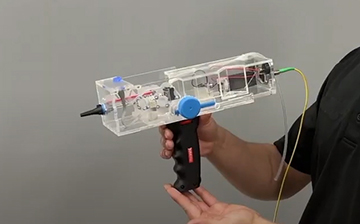
NIBIB Second Prize ($15,000): OCTAVE: Optical coherence tomography and vibrometry endoscope, University of California, Riverside
Christopher Clark, Minh-Huy Tran, Alexis Valencia, Briana Marquez, Sofia Gandarilla
OCTAVE is an endoscopic optical coherence tomography imaging probe that is capable of high-resolution, real-time, functional imaging of the middle ear structures. OCTAVE addresses a critical challenge in hearing loss detection by providing the capacity to image middle ear structures with high enough resolution to reveal specific sites of damage to the tympanic membrane.

NIBIB Third Prize ($10,000): Cesarean Delivery Glove, Northwestern University, Evanston, Illinois
Gabriella Desch-Obi, Alexis Chan, Aiden Smires, Priya Dave
The Cesarean Delivery Glove (CDG) is a cost-effective, reusable device that allows a single operator to safely and effectively resolve impaction of the fetal head within the mother’s pelvis during the cesarean section procedure. The CDG extends an obstetrician’s reach to provide sufficient force for extraction while minimizing risk of trauma to mother and baby.
NIH-sponsored prizes
“For the third consecutive year, NICHD's National Center for Medical Rehabilitation Research has sponsored a significant prize as part of the DEBUT Challenge. Assistive and rehabilitative technologies such as the low-cost, adaptable, bionic knee developed by this year’s winning team can improve the quality of life for people with physical disabilities.”
— Theresa Hayes Cruz, Ph.D., director, National Center for Medical Rehabilitation Research
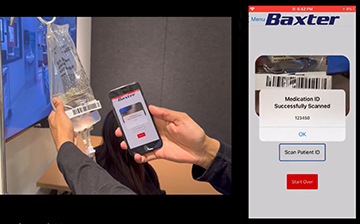
NIH Office of AIDS Research Technologies for HIV/AIDS Prevention and Care Prize ($15,000): Infusion Pump Mobile Application, Loyola University Chicago
Leah Smith, Dhruv Patel, Lauren David, Zhiyin Wu, Esther Wayntraub
The Infusion Pump Mobile Application integrates seamlessly with the Baxter Novum IQ infusion pump to ensure accurate and efficient drug infusion in the intensive care unit environment. The app provides patient verification, barcode integration, delivery confirmation, real-time infusion progress monitoring, alert and alarm notifications and direct medication order transmission. Intravenous (IV) infusions can potentially be used for HIV treatment, including antiretrovirals and broadly neutralizing antibodies.
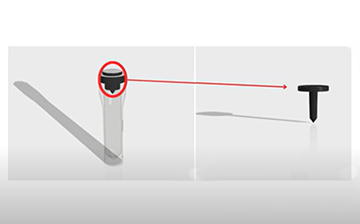
NIMHD Healthcare Technologies for Low-Resource Settings Prize ($15,000): NanoLIST, Cornell University, Ithaca, New York
Ruchira Hariharan, Ariella Avigad, Francesca Azzarito, Nathan Palamuttam, Kendal Phinney, Aiko Shibata, Viviana Esquivel, Sophia Hertel
NanoLIST is a rapid, low-cost test kit that utilizes gold nanoparticles to detect when a person’s saliva sample contains an elevated lead concentration. The test kit produces a result within 30 seconds. Its self-contained format is designed so a test can be safely performed without supervision by a clinician and for easy disposal.
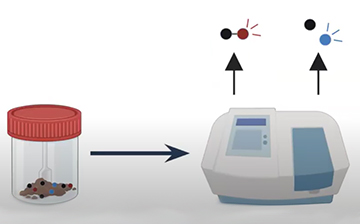
NCI Technologies for Cancer Prevention, Diagnosis, or Treatment Prize ($15,000): ColoTech: A ‘pro-diagnostic’ for the early detection of colorectal dysplastic and cancerous tissue, Stanford University, Palo Alto, California
Gabriel Seir, Shreya Garg, Kelly Lopez-Cid
ColoTech is a novel, cost-effective screening tool for abnormal (dysplastic) cells and could aid in earlier colorectal cancer detection. ColoTech’s highly sensitive approach uses a probe ingested by the patient that changes chemical composition upon contact with abnormal or cancerous tissue and could be an alternative to colonoscopy.
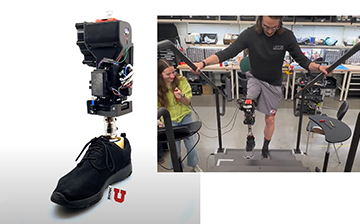
National Center for Medical Rehabilitation Research, NICHD Rehabilitative and Assistive Technologies Prize ($15,000): U-Build Bionic Knee: Transfemoral powered prosthetic, University of Utah, Salt Lake City
Duncan Stewart-Jackson, Elise Nielsen, Eleanor Stevens
The U-Build Bionic Knee is a low-cost, powered lower-extremity prosthesis designed to improve mobility and quality of life for individuals with lower-extremity amputation. The device generates assistive power at the knee joint, enabling ambulation on level ground, uneven terrain, and positive-power activities like sit-to-stand movement and stair ascent.
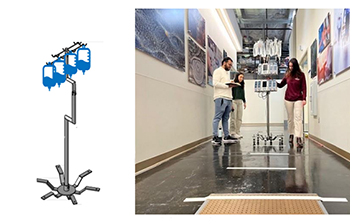
NINR Technologies to Empower Nurses in Community Settings Prize ($15,000): IV pole redesign, Virginia Polytechnic Institute and State University, Blacksburg
Sarah Scheerer, Douglas Argueta, Megan Gulian, Devin Donnelly, Utsav Shah
Intravenous (IV) poles are a staple of healthcare operations, but their current design makes visualizing medications difficult. IV Pole Redesign was built in collaboration with nurses and incorporates a tiered and angled hook rake top, an offset pole portion, a spider base, a line organizer, and wheels that improve mobility across threshold transitions.
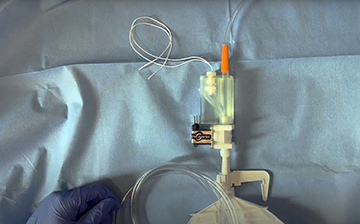
NIDDK Kidney Technology Development Prize ($15,000): NephroGuard, Clemson University, South Carolina
Aaron Spearman, Nicholas Stiebler, Calvin Chernyatinskiy, Omar Aguilar, Alexander Bowie
NephroGuard is a real-time diagnostic device to quickly detect onset of acute kidney injury in patients following cardiac surgery. NephroGuard uses an electrochemical sensor to detect a biomarker that has been shown to detect kidney injury within hours rather than days.
VentureWell-sponsored prizes
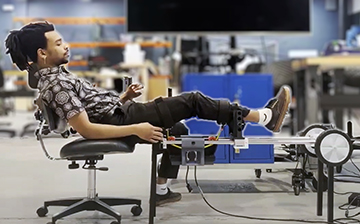
VentureWell Venture Prize ($15,000): Knee-sy Does It: Your therapy automation solution, Stevens Institute of Technology, Hoboken, New Jersey
Brandon Sems, Jalen Bailey, Margaret Gibson, Grace Fukazawa
Knee-sy Does It is a novel stretching device designed to replicate physical therapy treatment at home for patients suffering from knee osteoarthritis or recovering from knee surgery. Knee-sy Does It delivers a combination of dynamic and static stretches in a sequence similar to that which a physical therapist might administer in practice.
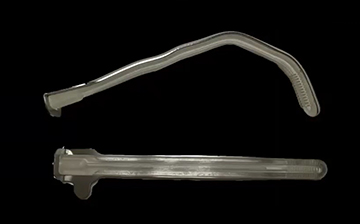
VentureWell Design Excellence Prize ($5,000): Malleous: A novel suction-retractor instrument to increase efficiency and effectiveness in the operating room, University of Pittsburgh
Ben Leslie, Anna Imran, Rohit Mantena,
Malleous is a surgical instrument combining suction and ribbon retraction tools in one device while maintaining the retractor's malleable and bendable properties. By reducing the need to pause during surgery, the Malleous device reduces surgery duration, which has the potential to increase surgeons’ efficiency and reduce the risk of complications.
Honorable Mentions
CERV: Cervical Dilation Monitor, Washington University in St Louis, Missouri
Elizabeth Buzbee, Sandy Montgomery, Annika Avula
CERV aims to replace manual cervical dilation measurements during labor. The device uses an endoscope held in the vaginal canal by a silicone cup to image the cervix and compute dilation.
OcuSound: Accessible Glaucoma Monitoring with Acoustic Tonometry, Johns Hopkins University, Baltimore
Valerie Wong, Benjamin Miller, Ashish Nalla, Hyun Seo Lee, Maria Giannakopoulos, Elliott Leow, Nancy Yan, Ivan-Alexander Kroumov
OcuSound is a noninvasive, patient-operated tonometer that uses sound waves and the acoustic properties of the eye to measure intraocular pressure, the key metric for monitoring glaucoma and preventing vision loss.
Bloom Speculum, Clemson University, South Carolina
Vaishnavi Kanduri, Elizabeth Dods, Karen De Guzman, Angeline Chen
The Bloom Speculum is a 4-blade, expandable vaginal speculum designed to improve visualization during gynecological procedures, such as loop electrosurgical excision procedures (LEEP) to remove precancerous lesions.
Endovascular Blood Clot Removal Device with a Non-driven Tip, University of California, San Diego
Nianza Delfin, Kayla Tracy, Angel Castellanos, Javier Guerrero, Michael Casares
This blood clot removal tool has a non-driven tip to minimize risk of tip breakage. It includes bearings and bushings attached to a memory shape wire with a molded silicone/rubber tip.
Ostomeasure, Purdue University-Main Campus
Sathveka Sembian, Maya Federle, Nicholas Buffo, Diya Sakhrani, Nikita Rao
Ostomeasure allows ostomy patients or medical providers to measure the stoma and cut an appropriately-sized hole in the ostomy bag with one integrated device. The bilateral equal measurement system increases accuracy.


